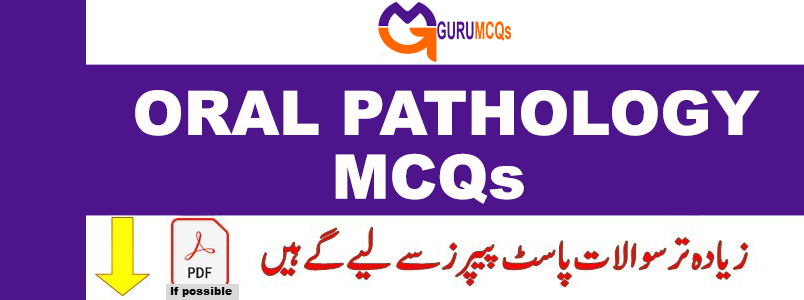
The mouth, being a vital organ with diverse functions, is subject to various diseases falling under the domain of oral pathology. This field encompasses the study of diseases affecting the mouth, jaws, and associated structures like salivary glands, facial muscles, temporomandibular joints, and perioral skin. Oral pathology, as a specialized discipline, focuses on diagnosing and investigating the causes and effects of diseases impacting the oral and maxillofacial region. For a thorough and objective assessment of students’ critical thinking abilities, multiple-choice questions (MCQs) serve as the preferred format. Gurumcqs.com offers a comprehensive collection of 2000+ oral pathology MCQs with answers and detailed explanations. These MCQs are carefully selected from reputable and trusted reference books on oral pathology. They prove beneficial for interview preparation, entrance examinations, competitive exams, and certifications, catering to individuals with varying levels of experience, including both seasoned professionals and newcomers. Additionally, you can explore MCQs on Oral Anatomy on this platform.
161. Focal sclerosing osteomyelitis is:__________?
A. Due to excessive periosteal bone formation
B. An extremely painful condition
C. Due to low grade chronic infection
D. A common sequel following sequestrectomy
162. Osteomyelitis begins as an inflammation of:__________?
A. Cortical bone
B. Periosteum
C. Medullary bone
D. periosteum and inner cortex
163. The earliest radiographic sign of osteomyelitis is___________?
A. Solitary or multiple small radiolucent areas
B. Increased granular radioopacity
C. Blurring of trabecular outlines
D. Formation of sequestrum appearing as radiopaque patches
164. The most common organism involved in a periapical abscess is:__________?
A. Strep. Pyogens
B. Strep. viridans
C. β hemolytic stretococci
D. Non hemolytic stretococci
165. The main causative agent of Ludwig’s angina is:__________?
A. Anaerobic streptococci
B. Aerobic streptococci
C. Staphylococci
D. Legionella infection
166. Which of the following periapical conditions is often associated with a vital pulp?
A. Apical cyst
B. Apical scar
C. Condensing osteitis
D. Chronic apical periodontitis
167. An acute apical abscess is usually a result of:__________?
A. Periodontal pocket
B. Occlusal interference
C. Necrotic pulp
D. Chronic gingivitis
168. Periapical cyst is usually preceded by:__________?
A. Periapical granuloma
B. Periodontal abscess
C. Periapical abscess
D. All of the above
169. Chronic hyperplastic pulpitis is:__________?
A. Necrotizing
B. Suppurative lesion
C. proliferation of a chronically inflamed pulp
D. Also called as phoenix abscess
170. A tooth with a 3 month history of pain, which was worse when hot liquid were in mouth. After extraction, the tooth was split open. The pulp chamber was completely filled with pus. A few remnants of pulp tissue were found in apical end. The condition is:__________?
A. Acute partial pulpits
B. Acute total pulpits
C. Suppurative pulpitis
D. Strangulation of pulp

Pingback: Oral Histology MCQs Questions for Test and Exam Preparation | GURU MCQS
I was recommended this website by my cousin. I’m not sure whether this post is written by him as nobody else
know suc detailed about my difficulty. You are wonderful!
Thanks! https://www.waste-ndc.pro/community/profile/tressa79906983/
I was recommended tthis webnsite by my cousin. I’m not suure whether this post is written by
him as nobody else know such detailed about myy difficulty.
You are wonderful! Thanks! https://www.waste-ndc.pro/community/profile/tressa79906983/